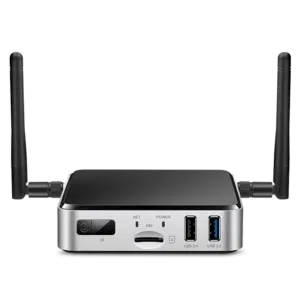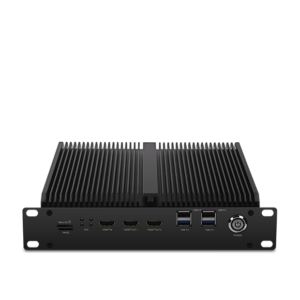AI on Side Devices vs. Cloud AI: Advantages and Cons
AI on Side Devices vs. Cloud AI: Advantages and Cons
Blog Article
A Extensive Manual to Deploying AI on Side Devices
Real-World Applications of AI on Side Units
Artificial intelligence (AI) is no longer restricted to the kingdom of big, centralized data centers. Because of advancements in engineering, side devices today perform a key role in deploying AI directly where data is generated. But what does AI on side units suggest, and how come it making such a news? Here, we'll examine how edge ai solutions operates in real life through side units and uncover their wide variety of sensible applications.

What is AI on Side Products?
AI on edge units describes deploying synthetic intelligence formulas entirely on devices like smartphones, cameras, drones, or IoT sensors. They do not require access to centralized servers for handling information; instead, they perform examination and conclusions locally, making the method quicker, better, and frequently more secure.
The "edge" here just identifies computing performed near or at the source of information era, in place of depending on the cloud. That shift is pushed by the requirements for real-time information control and the necessity to reduce latency, improve solitude, and minimize bandwidth usage.
Critical Real-World Programs of Edge AI
1. Intelligent Detective
AI-powered cameras built with face acceptance, action detection, and anomaly recognition are transforming surveillance systems. Edge products in that domain can analyze movie channels in real-time to recognize suspicious activities, remove false alerts, and enhance public safety. For instance, AI methods can discover uncommon activities and attentive authorities quickly without the need to deliver video data to a central machine for analysis.
2. Healthcare Monitoring
Wearable units and portable medical gear are leveraging m.2 ai accelerator for handling wellness knowledge more efficiently. Edge-based AI in devices like health trackers and smartwatches screens users' vitals, such as for instance heart rate, air levels, or blood force, in real-time. These programs analyze knowledge domestically and give instantaneous feedback, paving just how for faster intervention during emergencies.
Beyond wearables, advanced medical imaging devices designed with on-device AI may detect signals of conditions like cancer, permitting early in the day diagnoses even yet in remote places without internet connectivity.
3. Autonomous Cars
Self-driving cars are among the most well-known samples of edge AI in action. With devices, cameras, and LiDAR programs helping as information sources, AI computations get position onboard these vehicles to make split-second decisions. From sensing pedestrians and limitations to navigating city roads, edge AI ensures that the automobile works easily and efficiently. The real-time processing capability of side products reduces the dependence on high-latency cloud systems, ensuring safety in life-critical scenarios.
4. Retail Analytics
Side units in retail settings are helping companies analyze client behavior. Clever shelves and AI-equipped cameras may find client tastes, check catalog, and also customize in-store activities in real time. The information made from these units helps shops produce knowledgeable decisions, increase customer satisfaction, and improve stock management.

5. Commercial IoT
Factories and commercial crops are adopting edge AI to revolutionize their monitoring and automation processes. AI-powered sensors on equipment identify potential flaws long before they lead to costly failures. Predictive preservation pushed by side AI decreases downtime, improves productivity, and guarantees protection on the manufacturing floor.
6. Individualized Activities in Client Devices
Your smartphone is a perfect exemplory case of how edge AI personalizes individual experiences. Functions such as style assistants, adaptive camera controls, and on-device language interpretation use real-time AI to react to consumer needs without giving sensitive and painful data to external servers. That fosters both comfort and privacy for the finish user.
The Growing Impact of Side AI
The ownership of AI on edge units remains to rise, pushed by industries' increasing need for low-latency, real-time research, and greater information privacy. Its programs are reshaping industries which range from healthcare and automotive to public protection and retail. By adding AI's power closer to wherever information is generated, side units aren't only improving efficiency but also demonstrating the unlimited potential of invention in the present connected world. Report this page